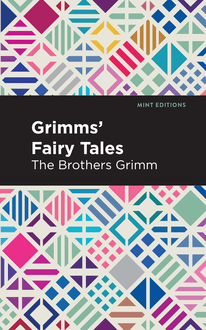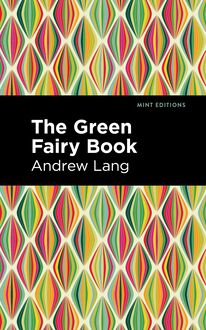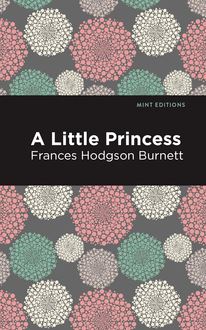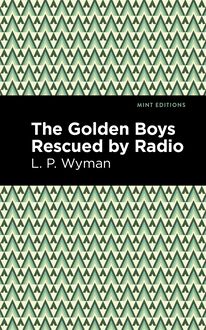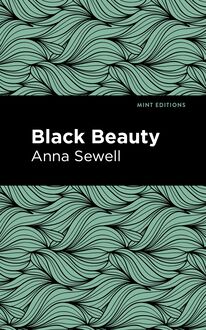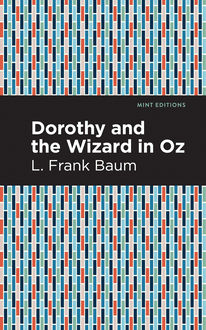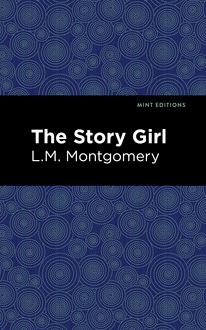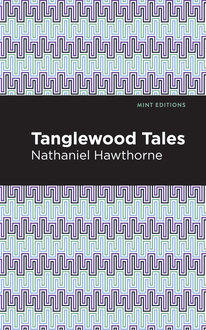-
 Univers
Univers
-
 Ebooks
Ebooks
-
 Livres audio
Livres audio
-
 Presse
Presse
-
 Podcasts
Podcasts
-
 BD
BD
-
 Documents
Documents
-
- Cours
- Révisions
- Ressources pédagogiques
- Sciences de l’éducation
- Manuels scolaires
- Langues
- Travaux de classe
- Annales de BEP
- Etudes supérieures
- Maternelle et primaire
- Fiches de lecture
- Orientation scolaire
- Méthodologie
- Corrigés de devoir
- Annales d’examens et concours
- Annales du bac
- Annales du brevet
- Rapports de stage
La lecture à portée de main
Vous pourrez modifier la taille du texte de cet ouvrage
Découvre YouScribe en t'inscrivant gratuitement
Je m'inscrisDécouvre YouScribe en t'inscrivant gratuitement
Je m'inscrisEn savoir plus
Vous pourrez modifier la taille du texte de cet ouvrage
En savoir plus

Description
Grim Tales (1893) is a collection of seven horror stories by English writer Edith Nesbit. Noted for her work as an author of children’s novels and stories—especially her beloved Bastable and Psammead Trilogies—Edith Nesbit crafts tales of wonder, mystery, and terror for children and adults alike. Grim Tales, one of the author’s early works, is a collection of tales of horror aimed at an adult audience.
In “The Ebony Frame,” an impoverished journalist receives an unexpected inheritance from his Aunt Dorcas, a wealthy widow. With a sizeable fortune and a furnished home in Chelsea, he settles into a life of comfort. Early in his stay, however, he discovers on the wall a mysterious frame, which he had never seen before in his frequent visits. Jane, his aunt’s housemaid, informs him of the frame’s recent purchase, and sends him searching for its original contents in the house’s attic. He finds a strange set of portraits. In one, he quickly recognizes his own face. From the other, a beautiful woman stares out, her eyes strangely familiar. In “John Charrington’s Wedding,” a best man describes the mysterious events leading up to his friend’s day of marriage. After witnessing John promise to his fiancé May that, if necessary, he would return from the grave just to marry her, the narrator is filled with a sense of dread about the approaching wedding. As the day approaches, and as John mysteriously disappears, his best man wonders if the promise he witnessed was not, in fact, a prophecy too terrible to imagine.
With a beautifully designed cover and professionally typeset manuscript, this edition of Edith Nesbit’s Grim Tales is a classic of English literature and horror fiction reimagined for modern readers.
Sujets
Informations
| Publié par | Mint Editions |
| Date de parution | 05 janvier 2021 |
| Nombre de lectures | 0 |
| EAN13 | 9781513274805 |
| Langue | English |
Informations légales : prix de location à la page 0,0300€. Cette information est donnée uniquement à titre indicatif conformément à la législation en vigueur.
Extrait
Grim Tales
Edith Nesbit
Grim Tales was first published in 1893.
This edition published by Mint Editions 2020.
ISBN 9781513269801 | E-ISBN 9781513274805
Published by Mint Editions®
minteditionbooks.com
Publishing Director: Jennifer Newens
Design & Production: Rachel Lopez Metzger
Typesetting: Westchester Publishing Services
C ONTENTS T HE E BONY F RAME J OHN C HARRINGTON ’ S W EDDING U NCLE A BRAHAM ’ S R OMANCE T HE M YSTERY OF THE S EMI -D ETACHED F ROM THE D EAD M AN -S IZE IN M ARBLE T HE M ASS FOR THE D EAD
T HE E BONY F RAME
T o be rich is a luxurious sensation—the more so when you have plumbed the depths of hard-up-ness as a Fleet Street hack, a picker-up of unconsidered pars, a reporter, an unappreciated journalist—all callings utterly inconsistent with one’s family feeling and one’s direct descent from the Dukes of Picardy.
When my Aunt Dorcas died and left me seven hundred a year and a furnished house in Chelsea, I felt that life had nothing left to offer except immediate possession of the legacy. Even Mildred Mayhew, whom I had hitherto regarded as my life’s light, became less luminous. I was not engaged to Mildred, but I lodged with her mother, and I sang duets with Mildred, and gave her gloves when it would run to it, which was seldom. She was a dear good girl, and I meant to marry her some day. It is very nice to feel that a good little woman is thinking of you—it helps you in your work—and it is pleasant to know she will say “Yes” when you say “Will you?”
But, as I say, my legacy almost put Mildred out of my head, especially as she was staying with friends in the country just then.
Before the first gloss was off my new mourning I was seated in my aunt’s own armchair in front of the fire in the dining-room of my own house. My own house! It was grand, but rather lonely. I did think of Mildred just then.
The room was comfortably furnished with oak and leather. On the walls hung a few fairly good oil-paintings, but the space above the mantelpiece was disfigured by an exceedingly bad print, “The Trial of Lord William Russell,” framed in a dark frame. I got up to look at it. I had visited my aunt with dutiful regularity, but I never remembered seeing this frame before. It was not intended for a print, but for an oil-painting. It was of fine ebony, beautifully and curiously carved.
I looked at it with growing interest, and when my aunt’s housemaid—I had retained her modest staff of servants—came in with the lamp, I asked her how long the print had been there.
“Mistress only bought it two days afore she was took ill,” she said; “but the frame—she didn’t want to buy a new one—so she got this out of the attic. There’s lots of curious old things there, sir.”
“Had my aunt had this frame long?”
“Oh yes, sir. It come long afore I did, and I’ve been here seven years come Christmas. There was a picture in it—that’s upstairs too—but it’s that black and ugly it might as well be a chimley-back.”
I felt a desire to see this picture. What if it were some priceless old master in which my aunt’s eyes had only seen rubbish?
Directly after breakfast next morning I paid a visit to the lumber-room.
It was crammed with old furniture enough to stock a curiosity shop. All the house was furnished solidly in the early Victorian style, and in this room everything not in keeping with the “drawing-room suite” ideal was stowed away. Tables of papier-mach é and mother-of-pearl, straight-backed chairs with twisted feet and faded needlework cushions, firescreens of old-world design, oak bureaux with brass handles, a little work-table with its faded moth-eaten silk flutings hanging in disconsolate shreds: on these and the dust that covered them blazed the full daylight as I drew up the blinds. I promised myself a good time in re-enshrining these household gods in my parlour, and promoting the Victorian suite to the attic. But at present my business was to find the picture as “black as the chimley-back;” and presently, behind a heap of hideous still-life studies, I found it.
Jane the housemaid identified it at once. I took it downstairs carefully and examined it. No subject, no colour were distinguishable. There was a splodge of a darker tint in the middle, but whether it was figure or tree or house no man could have told. It seemed to be painted on a very thick panel bound with leather. I decided to send it to one of those persons who pour on rotting family portraits the water of eternal youth—mere soap and water Mr. Besant tells us it is; but even as I did so the thought occurred to me to try my own restorative hand at a corner of it.
My bath-sponge, soap, and nailbrush vigorously applied for a few seconds showed me that there was no picture to clean! Bare oak presented itself to my persevering brush. I tried the other side, Jane watching me with indulgent interest. The same result. Then the truth dawned on me. Why was the panel so thick? I tore off the leather binding, and the panel divided and fell to the ground in a cloud of dust. There were two pictures—they had been nailed face to face. I leaned them against the wall, and the next moment I was leaning against it myself.
For one of the pictures was myself—a perfect portrait—no shade of expression or turn of feature wanting. Myself—in a cavalier dress, “love-locks and all!” When had this been done? And how, without my knowledge? Was this some whim of my aunt’s?
“Lor’, sir!” the shrill surprise of Jane at my elbow; “what a lovely photo it is! Was it a fancy ball, sir?”
“Yes,” I stammered. “I—I don’t think I want anything more now. You can go.”
She went; and I turned, still with my heart beating violently, to the other picture. This was a woman of the type of beauty beloved of Burne Jones and Rossetti—straight nose, low brows, full lips, thin hands, large deep luminous eyes. She wore a black velvet gown. It was a full-length portrait. Her arms rested on a table beside her, and her head on her hands; but her face was turned full forward, and her eyes met those of the spectator bewilderingly. On the table by her were compasses and instruments whose uses I did not know, books, a goblet, and a miscellaneous heap of papers and pens. I saw all this afterwards. I believe it was a quarter of an hour before I could turn my eyes away from hers. I have never seen any other eyes like hers. They appealed, as a child’s or a dog’s do; they commanded, as might those of an empress.
“Shall I sweep up the dust, sir?” Curiosity had brought Jane back. I acceded. I turned from her my portrait. I kept between her and the woman in the black velvet. When I was alone again I tore down “The Trial of Lord William Russell,” and I put the picture of the woman in its strong ebony frame.
Then I wrote to a frame-maker for a frame for my portrait. It had so long lived face to face with this beautiful witch that I had not the heart to banish it from her presence; from which, it will be perceived that I am by nature a somewhat sentimental person.
The new frame came home, and I hung it opposite the fireplace. An exhaustive search among my aunt’s papers showed no explanation of the portrait of myself, no history of the portrait of the woman with the wonderful eyes. I only learned that all the old furniture together had come to my aunt at the death of my great-uncle, the head of the family; and I should have concluded that the resemblance was only a family one, if every one who came in had not exclaimed at the “speaking likeness.” I adopted Jane’s “fancy ball” explanation.
And there, one might suppose, the matter of the portraits ended. One might suppose it, that is, if there were not evidently a good deal more written here about it. However, to me, then, the matter seemed ended.
I went to see Mildred; I invited her and her mother to come and stay with me. I rather avoided glancing at the picture in the ebony frame. I could not forget, nor remember without singular emotion, the look in the eyes of that woman when mine first met them. I shrank from meeting that look again.
I reorganized the house somewhat, preparing for Mildred’s visit. I turned the dining-room into a drawing-room. I brought down much of the old-fashioned furniture, and, after a long day of arranging and re-arranging, I sat down before the fire, and, lying back in a pleasant languor, I idly raised my eyes to the picture. I met her dark, deep hazel eyes, and once more my gaze was held fixed as by a strong magic—the kind of fascination that keeps one sometimes staring for whole minutes into one’s own eyes in the glass. I gazed into her eyes, and felt my own dilate, pricked with a smart like the smart of tears.
“I wish,” I said, “oh, how I wish you were a woman, and not a picture! Come down! Ah, come down!”
I laughed at myself as I spoke; but even as I laughed I held out my arms.
I was not sleepy; I was not drunk. I was as wide awake and as sober as ever was a man in this world. And yet, as I held out my arms, I saw the eyes of the picture dilate, her lips tremble—if I were to be hanged for saying it, it is true. Her hands moved slightly, and a sort of flicker of a smile passed over her face.
I sprang to my feet. “This won’t do,” I said, still aloud. “Firelight does play strange tricks. I’ll have the lamp.”
I pulled myself together and made for the bell. My hand was on it, when I heard a sound behind me, and turned—the bell still unrung. The fire had burned low, and the corners of the room were deeply shadowed; but, surely, there—behind the tall worked chair—was something darker than a shadow.
“I must face this out,” I said, “or I shall never be able to face myself again.” I left the bell, I seized the poker, and battered the dull coals to a blaze. Then I stepped back resolutely, and looked up at the picture. The ebony frame was empty! From the shadow of the worked chair came a silken rustle, and out of the shadow the woman of the picture was coming—coming towards me.
I hope I shall never again
-
 Univers
Univers
-
 Ebooks
Ebooks
-
 Livres audio
Livres audio
-
 Presse
Presse
-
 Podcasts
Podcasts
-
 BD
BD
-
 Documents
Documents
-
Jeunesse
-
Littérature
-
Ressources professionnelles
-
Santé et bien-être
-
Savoirs
-
Education
-
Loisirs et hobbies
-
Art, musique et cinéma
-
Actualité et débat de société
-
Jeunesse
-
Littérature
-
Ressources professionnelles
-
Santé et bien-être
-
Savoirs
-
Education
-
Loisirs et hobbies
-
Art, musique et cinéma
-
Actualité et débat de société
-
Actualités
-
Lifestyle
-
Presse jeunesse
-
Presse professionnelle
-
Pratique
-
Presse sportive
-
Presse internationale
-
Culture & Médias
-
Action et Aventures
-
Science-fiction et Fantasy
-
Société
-
Jeunesse
-
Littérature
-
Ressources professionnelles
-
Santé et bien-être
-
Savoirs
-
Education
-
Loisirs et hobbies
-
Art, musique et cinéma
-
Actualité et débat de société
- Cours
- Révisions
- Ressources pédagogiques
- Sciences de l’éducation
- Manuels scolaires
- Langues
- Travaux de classe
- Annales de BEP
- Etudes supérieures
- Maternelle et primaire
- Fiches de lecture
- Orientation scolaire
- Méthodologie
- Corrigés de devoir
- Annales d’examens et concours
- Annales du bac
- Annales du brevet
- Rapports de stage
